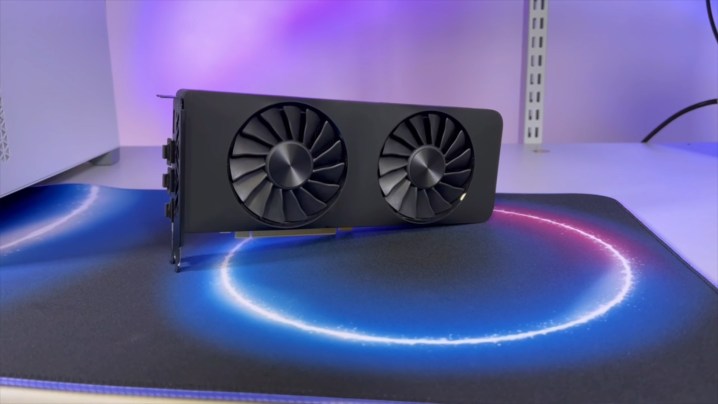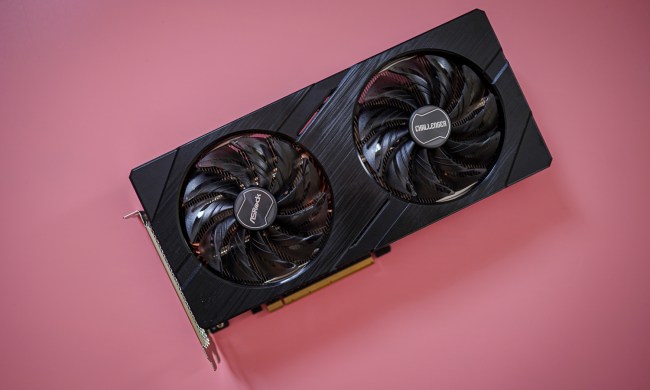Intel has confirmed in a recent interview that it plans to finally launch the Arc A770 and Arc A750 graphics cards “very soon.” The flagship is said to be capable of competing against Nvidia’s RTX 3060 Ti.
Alongside the happy news about an imminent launch date, Intel has also shared its one major regret, and it’s an important one — the launch strategy of Arc Alchemist.
That’s right — it seems that Intel might finally be inching closer to the official launch of its flagship gaming graphics cards. Although the company didn’t share an exact release date, it did reveal a lot about the upcoming GPUs. The information comes from two interviews (courtesy of PC Games Hardware and Digital Foundry) with Intel Arc experts; one with Ryan Shrout and Tom Petersen, and one with Petersen alone.
Petersen and Shrout teased that the Arc A770 Limited Edition graphics card will arrive with 16GB of GDDR6 memory. However, custom versions made by Intel’s board partners will be available in either 16GB or 8GB variants. The Arc A750 will also come with 8GB of memory.

Some of the GPUs made by Intel’s partners will come with a factory overclock that will increase their power limits. Much the way it goes for Nvidia and AMD, this should boost the performance of these GPUs above what Intel itself is offering.
Intel expects to be able to trade blows with Nvidia’s GeForce RTX 3060 Ti GPU, at least where the flagship A770 is concerned. The A750 is being set up as a competitor to the RTX 3060 instead. Earlier on in the development, there have been many rumors about the A770 being able to rival the RTX 3070, but Intel seems to have given up on that idea.
The issue of resizable base address register (also known as ReBAR) was also brought up. Petersen remained candid as he recommended that Intel Arc graphics cards should be used with newer systems that support ReBAR. Using one of Intel’s GPUs on an older system that doesn’t support this technology might result in an up to 40% drop in performance. This won’t be fixed for Intel Arc, but Intel hopes to mitigate this in its next-gen offerings.
We’ve already heard from many sources, including Intel itself, that the performance of Arc GPUs may not blow our minds. Petersen admitted that this might not change by saying that the Arc A-Series “can’t really change dramatically on performance.” With that said, Intel continues to commit to its idea to beat the competition with pricing. Unfortunately, we still don’t know how much the GPUs will cost, so it’s hard to know how much Intel means business here.
Intel’s honest approach continues throughout both interviews, revealing a regret about a key part of the launch strategy — releasing the Arc A380 only in China at first. Intel admits that this didn’t work out the way it had planned; media outlets were not so eager to ship whole systems from China just to test Intel’s new GPU, so the card received very little coverage. In addition, Petersen admitted that the massive delays in launching Intel Arc didn’t result from supply constraints — Intel simply wasn’t ready to release the graphics cards just yet.
There’s plenty more to learn from the two interviews, so make sure to give them a watch if you want to know more. Intel’s candid approach continues to be refreshing, but will the competitive pricing be enough to put these graphics cards on our list of the best GPUs of the year? We will have to wait and see.




